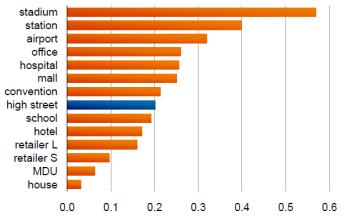Ever wondered how they go about deciding where to put a new cellular base station? It’s a fairly complicated process. It’s also very much site specific, awkward locations, landlords, etc. but as an average the following table is a fair reflection of the effort (source Accelera Mobile Broadband with some O2 validation).
| Activity |
Effort (Man Days) |
| New site verification |
1 |
| On site visit: site details verification |
0.5 |
| On site visit: RF survey |
0.5 |
| New site RF plan |
2 |
| Neighbours, frequency, preamble/scrambling code plan |
0.5 |
| Interference analyses on surrounding sites |
0.5 |
| Capacity analyses |
0.5 |
| Handover analyses |
0.5 |
| Implementation on new node(s) |
0.5 |
| Field measurements and verification |
2 |
| Optimization |
2 |
| Total activities |
7.5 man days |
Now just imagine the urban 4G/LTE scenario we have been discussing, where there are ten times as many small cells as in the existing macrocell model. Research org ABI has forecast that there will be 5 million small cells by 2015.
That’s a lot of site surveys using the traditional model. A lot of man days. The only sensible answer is to deploy Self Organising Network. SONs seem to have some way to go before they are mature enough for full scale deployment but there is time, in the UK at least.
A SON has, in theory all the features you might expect from the name. Cells should self-configure, regularly self-optimize parameters and algorithmic behaviour in response to observed changes in network performance and atmospheric conditions. Self-healing mechanisms can be triggered to temporarily compensate for a detected equipment outage whilst waiting for a permanent fix. Nirvana really – plug and play. As we have already found out in the lamp post story plug and play is probably some time away but it will come.

